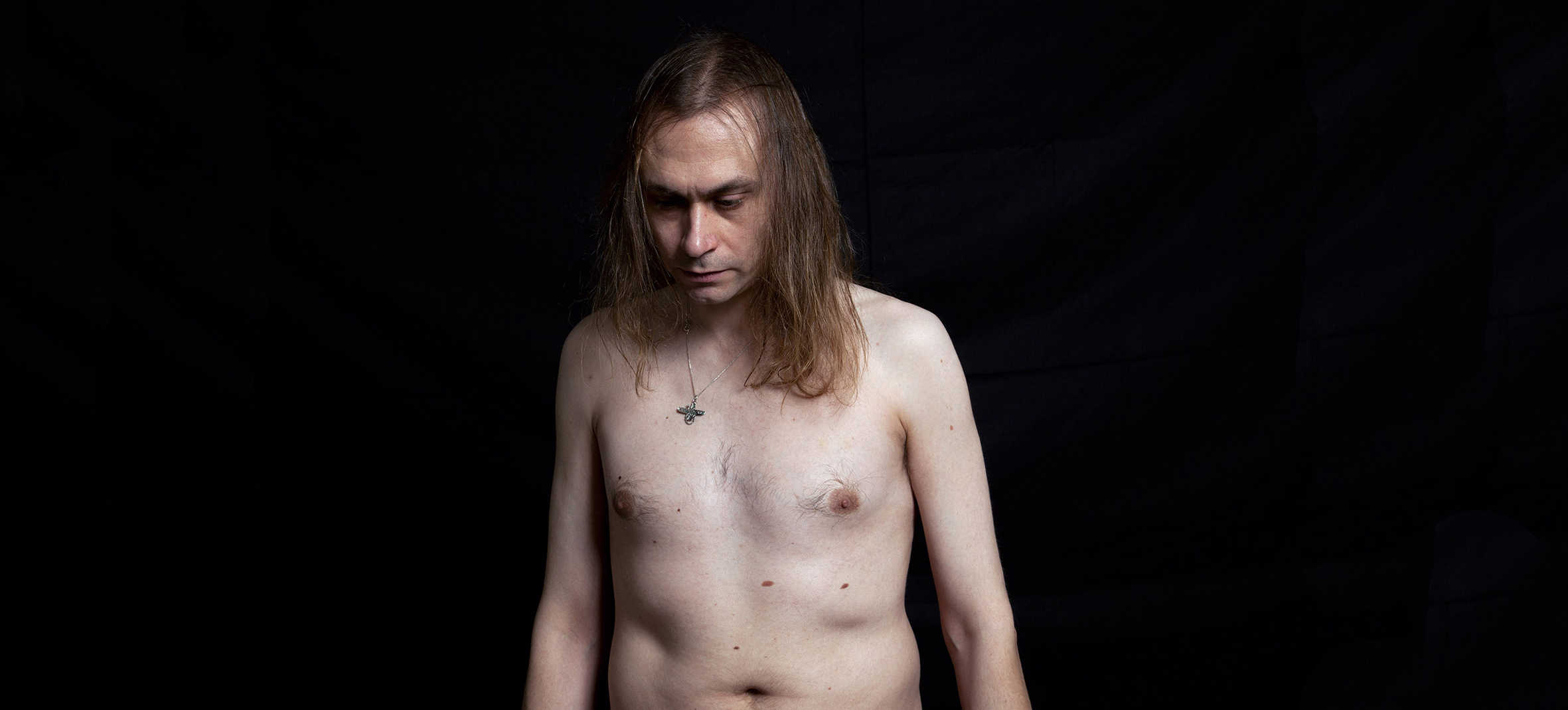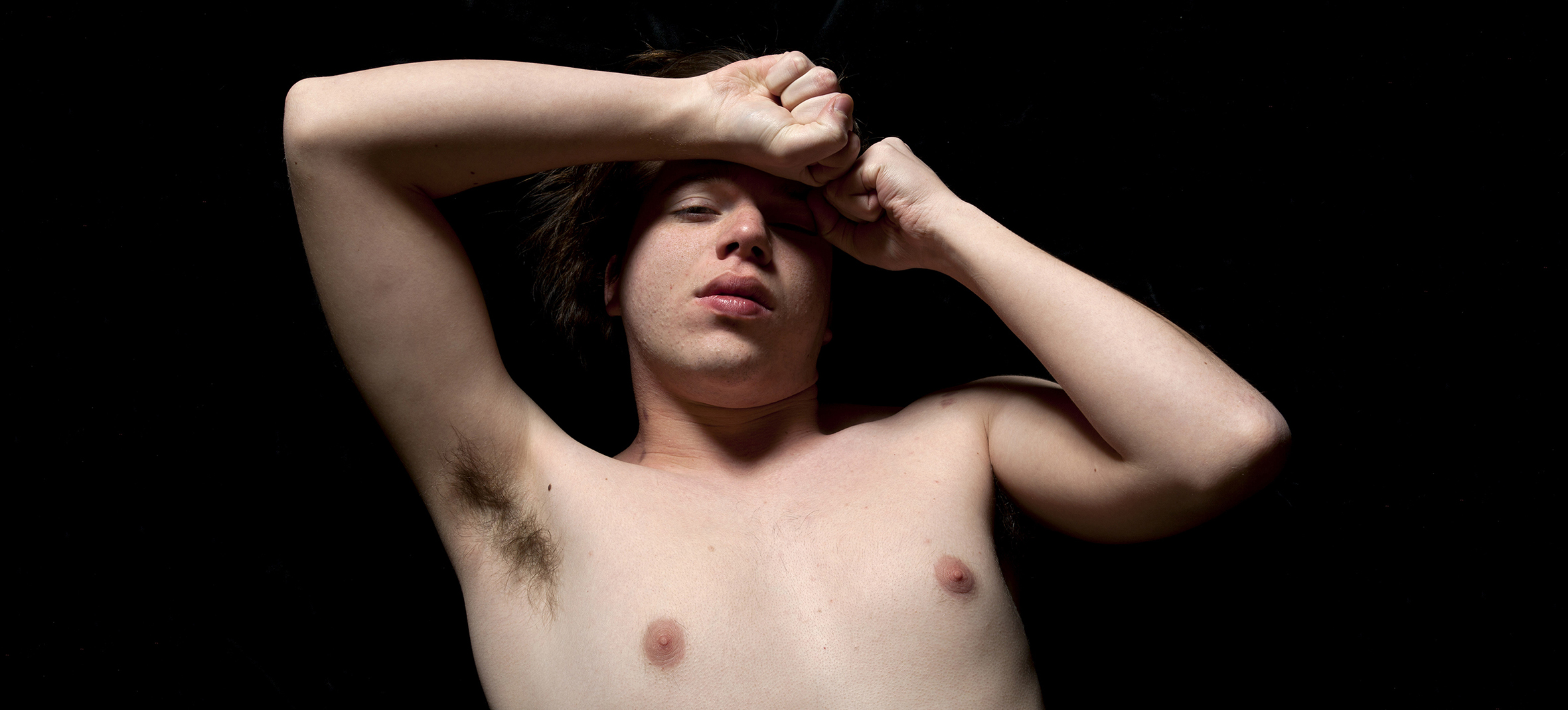

Last weekend I held a self-portrait lab at the MC2 Gallery in Milan, during the Canon Fotografica Festival 2009. It was a great success: we were fully booked and we even had a waiting list! There was my interview published on the CORRIERE DELLA
SERA and another one on Radio 2, where I’ll be again next Saturday Dec. 12, broadcast live.
Another interview was filmed on video for the Canon website, but it was removed immediately from the site… I still don’t know why, maybe because I stripped my clothes off to explain the instructions I gave to people and to show how we take self-portraits according to my method. You can see it
here, uncensured… (it’s in Italian, though!)
The images we produced are magnificent. You can see a selection of the best in this video.
This is how it happened. People came, one at a time, to a studio I had mounted in the gallery’s storeroom (a perfect “cavern”). I had two different settings: one on a mattress with black background on the floor and one against a black curtain. I didn’t have the time to change the setting for each participant: each day I decided which one to use. I asked everyone to remain on topless, for several reasons. First of all, because being partly naked makes you feel vulnerable, closer to a primordial state, like that of the newborn baby. Secondly, because the images that show a naked body have more possibilities of becoming iconic, of traveling in time and space. Clothes tie you up to this era and take freedom away from you. Some women didn’t want to show their breasts, so I told them that I would cut the frame to the naked shoulders. In other cases I accepted that they would refuse to show these pictures: I prefer that someone really does the exercise in freedom, no matter if we won’t be able to publish that image. All of these women were happy to publish the images in the end. I think this is because they wanted to communicate the cathartic feeling they got during the experience.
Another reason for nakedness is that I believe the human body needs to recover its capacity to express emotions. We are bombarded with empty, superficial images of the naked body. The fear of showing our body has grown to become an obsession, partly due to the psychosis of sex offenders. If we express emotions with our naked body, no sex offenders will harass us. My flickr page is full of my naked self-portraits, and I never get rude comments, because my strong emotional expression disturbs and scares the offender, who wants superficial images with no emotion. If we start to
diffuse a powerful, expressive image of the naked body, this will certainly help to change things. People will start to be nurtured by these images and
probably the phenomenon of internet sex harassment and abuse will decrease.
Anyhow, people came for 30 minute individual sessions, I gave them technical instructions on how to use the cable release (always with a 10 sec timer) and how they could move, and then I generally asked them to choose between RAGE, DESPAIR and TERROR. Extreme emotions that they should act out, not for the camera but for themselves, while listening to find true emotions. Whenever they touched a real feeling, they should push it out and empty themselves of it. Then they would explore that emptiness, listening to whatever emotions were left, the thoughts that passed by, their breath and body. In all 10 pictures maximum. I left them alone in the room to take pictures, and when they finished, they would call me and we would work on the perception and choice of the final work, if any.
What’s amazing is that most participants produced at least one beautiful image. Let’s say 80%. Of these, half were really strong artworks. What’s also interesting is that people who are used to be in front of the camera generally don’t produce particularly interesting images, because these artworks are produced with the participant’s emotions. This exercise is a homage to those difficult emotions that we often cannot express in life. By converting them in art, by making a beautiful image with them, we find a way out for them, we foster 100% self-acceptance and we give them an essential social role: nurturing humanity with artworks make of sheer humanity.
 The collaborative self-portrait above shows my dear friend Gabriele, who you have already seen in the blog article “Gabriele is not a transexual anymore”. With him we always produce wonderful works. This one reminded me of Caravaggio, so I called it “After the sting of the lizard” suggesting it shows the moment after of Caravaggio’s famous painting “Boy bitten by a lizard”.
The collaborative self-portrait above shows my dear friend Gabriele, who you have already seen in the blog article “Gabriele is not a transexual anymore”. With him we always produce wonderful works. This one reminded me of Caravaggio, so I called it “After the sting of the lizard” suggesting it shows the moment after of Caravaggio’s famous painting “Boy bitten by a lizard”.
I am always moved by the way some people enter my studio, feeling terrible and scared but nevertheless wanting a powerful experience, and how they come out, visibly empowered, with a very bright gaze, amazed at their own self-discovery. Some leave the studio hugging me, and looking at me as if I were a magician. To someone like me, who usually feels lonely and isolated, suffering from a strong inner uneasiness, this is like heaven. It’s like being able to really connect with others on a very deep level, by giving them something important.
I think this is because my aim is to find the divine in every human being. Their higher self. It’s exactly what I’ve been doing with myself all my life, to survive my low self-esteem, my feelings of inadequacy. To help others do it helps me to see a friendlier world, to have faith in humanity. Yes, I do this mainly because it’s therapeutic for me, and it happens to be useful to others too. Osho says “be shellfish” and if you really are, you will find treasures in yourself, and you will be willing to give them away.
But all this is possible through art. And the best the art, the more powerful the effect. I am now working with curator and art critic Daniele de Luigi on the artistic project, made of collaborative self-portraits. Daniele has written a beautiful text on HIGHER SELF, raising very interesting issues which seem to me great discoveries. Here it is:
Higher self: a journey towards the origin
of emotions and of images
An essay by Daniele De Luigi
Cristina Núñez’s HIGHER SELF is produced
in a space where several conceptual and disciplinary “limit zones” converge:
the one between traditional photographic practice and contemporary art
processuality, the one between formal conception and social activism,
including, in the creative act, disciplines such as psychoanalysis, philosophy
and anthropology, not only in theory but also in practice. At the same time,
the project is able to contain an intense emotional load and a powerful
aesthetic impact. In HIGHER SELF, the final work is as important as the unique
procedure which is necessary to obtain it.
HIGHER SELF starts from a strictly
photographic dimension: that of the studio portrait and of the workshop in
which participants are involved in the creative work. Cristina Núñez directs
the whole process, but her absence during the actual making of the images, an
indispensable condition for the operation’s success, questions the absolute
autonomy of the artist-photographer in the creation of the image,
acknowledging the subject’s co-authorship. Núñez’s artistic procedure does not
obtain a certain or predictable result, because the artist deliberately refuses
to control the actual execution, and all depends on the participant’s ability
to respond to the experience she proposes.
The artist’s footprint reappears in the
selection of the final work, even though the participant is also engaged in a
shared interpretative process. The subject is authentically involved in the
material execution of the image.
The project’s creative process is
characteristic and decisive, but the final work, in which the process condenses
itself iconographically, acquires the utmost importance.
Many of the self-portraits produced under
Cristina Núñez’s guidance show a high iconicity and recall well known
iconographies which belong to our memory’s and our visual culture’s
historical repertoire. We can therefore deduce an unexpected return
to symbolism.
The extraordinary fact is that these
iconographies are not created in an intentional artistic and intellectual
action which voluntarily refers to codified formulas, but they spring from a
creative process in which, in the precise moment of creation of the image,
there is no control on its shape or composition.
The surprising relationship between the
subject’s emotional mood and the traditional meanings attributed to the
iconographies which these images evoke, is such that
these photographs are speaking about the very origin of images and the truth of
gestures and human expressions which constitute the foundation of the visual
civilization developed in ancient times.
Induced by Cristina Núñez to express
their deepest, primary emotions, and at the same time conscious of being
transformed or translated into images, some of these people spontaneously
create icons which belong to our collective memory. They are not
representing an iconography, but they are incarnating its symbolical
abstraction through their own personal experience.
Daniele De Luigi
